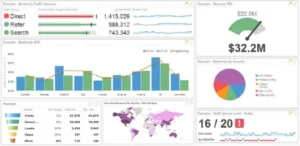How Salesforce integrates with financial systems like QuickBooks, SAP, and NetSuite
Salesforce can integrate with financial systems like QuickBooks, SAP, and NetSuite using middleware, such as Zapier, or with Salesforce’s built-in integration tools, such as Salesforce Connect and Salesforce Lightning Connect. These tools allow for bi-directional data transfer, meaning data transfers between Salesforce and the financial system in real time. This enables users to view and update financial data within Salesforce while allowing financial data to update in the financial system. Additionally, third-party apps and connectors on the Salesforce AppExchange can facilitate the integration between Salesforce and financial systems such as QuickBooks, SAP, and NetSuite.
How the integration planned and executed
The planning and execution of a Salesforce integration with a financial system like QuickBooks, SAP, or NetSuite typically involve the following steps:
- Identify the requirements: The first step is identifying the specific business requirements for the integration. This includes determining which data must be shared between Salesforce and the financial system and how that data should be used.
- Assess the current systems: The next step is to assess the existing systems, including Salesforce and the financial system. This includes identifying any limitations or challenges that may need overcoming during the integration process.
- Choose an integration method: Based on the requirements and current systems, an integration process must be chosen. This can include using built-in Salesforce tools, such as Salesforce Connect or Salesforce Lightning Connect, or a third-party integration platform, such as Zapier.
- Design and development: Once the integration method has been chosen, the design and development of the integration can begin. This includes creating mappings for the data shared between the systems and configuring any necessary connectors or middleware.
- Testing and deployment: After the integration development, it is essential to thoroughly test the integration to ensure that it is working as expected. Once testing is complete, the integration can be deployed to the production environment.
- Maintenance and monitoring: Once the integration is deployed, monitoring the integration for any issues and performing regular maintenance to ensure that it continues to function correctly is crucial.
It is important to note that the integration should be done by a Salesforce consultant like Cloud Next Level with experience in integrating Salesforce with other systems or with the help of a partner specializing in integration services.







